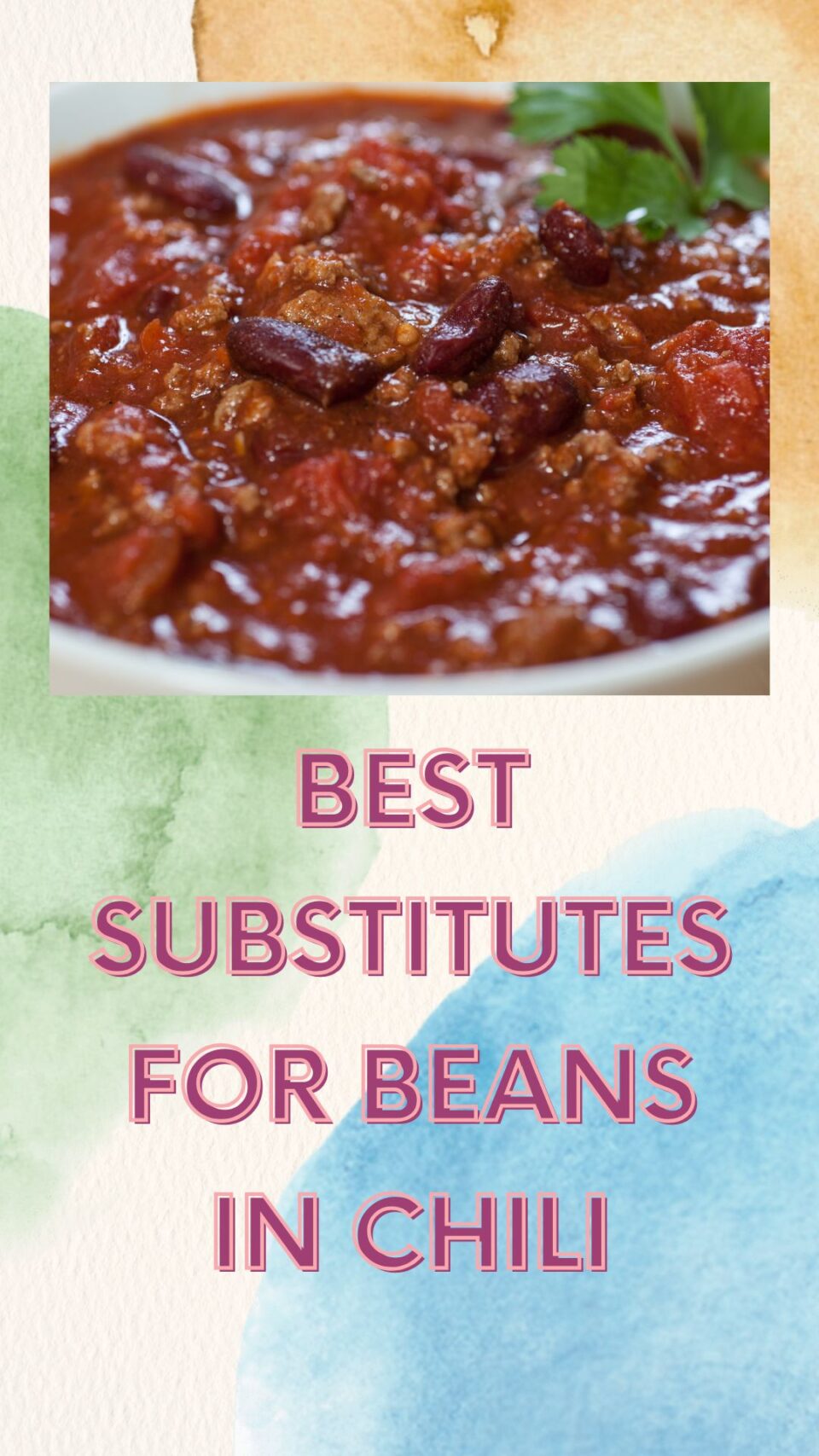In casual conversation, a very cheeky answer to what would be the best substitutes for beans in chili would be to use no beans for chili. Perhaps it is this type of response that actually makes finding good answers for the question very difficult.
Let’s face it, beans are not a random or new-fangled ingredient for chili. They’ve been around for a long time and bring a nice depth of texture, flavor, and nutrition to the recipe. And if someone is working off a recipe that asks for beans, just skipping them would likely leave a gap in the finished recipe.
So, considering available options is a good idea. Some of the best substitutes for beans in chili are cubed zucchini, lentils, portobello mushrooms, additional meat (beef/pork), hominy, texturized vegetable protein (TVP), tempeh, tofu, nuts, and cooked rice (or other grains).
Of course, some of these require more thought than simply tossing them into the recipe in place of beans. It’s time to get into the details.
Table of Contents
Top Alternatives And Substitutes For Beans In Chili
1. Adding Additional Meat (Beef Or Pork)
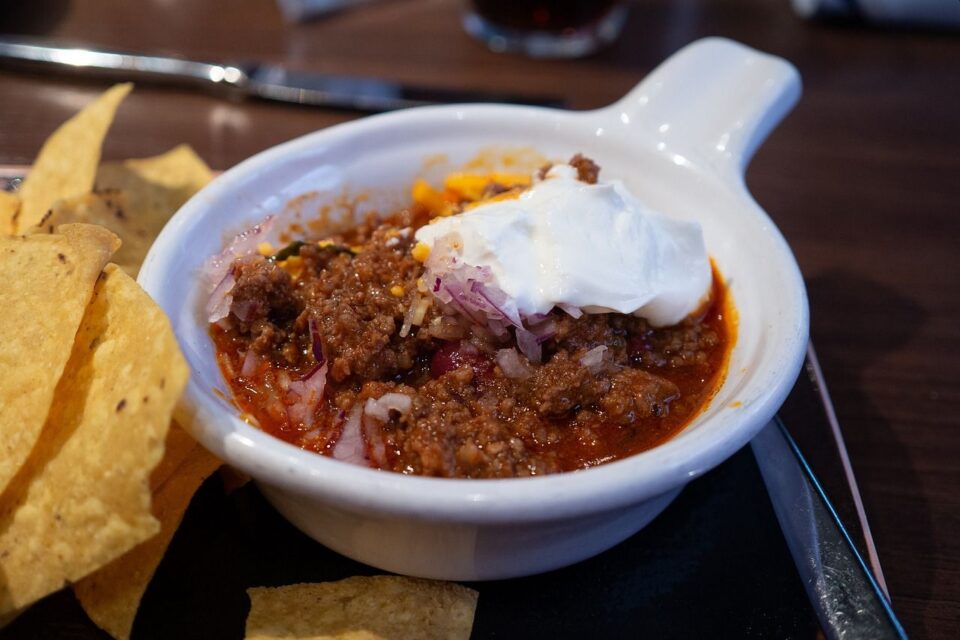
For many chili recipes, beans are a way to reduce the meat content or make up for the lack of meat. As such, if you don’t mind adding extra meat to the mix, this addition could work as an excellent substitute for beans.
As we know, many classic recipes for chili don’t favor the use of beans. Texas chili is a suitable example of this. Therefore, the conventional idea follows that if you need to replace beans in chili, adding more of meat should do the trick just fine.
In fact, as we’ll see later in the article, many substitutes for beans in chili are also conventional ingredients that work as meat replacements in many recipes.
So, whether the recipe is working with beef or pork, adding some more meat should take away any changes that the lack of beans may present. In a way, this method is like adding more of one ingredient to make up for the lack of the other.
How well this method works is entirely dependent on your preferences. If adding more meat in place of beans seems like something you would enjoy, by all means, go for it!
2. Zucchini
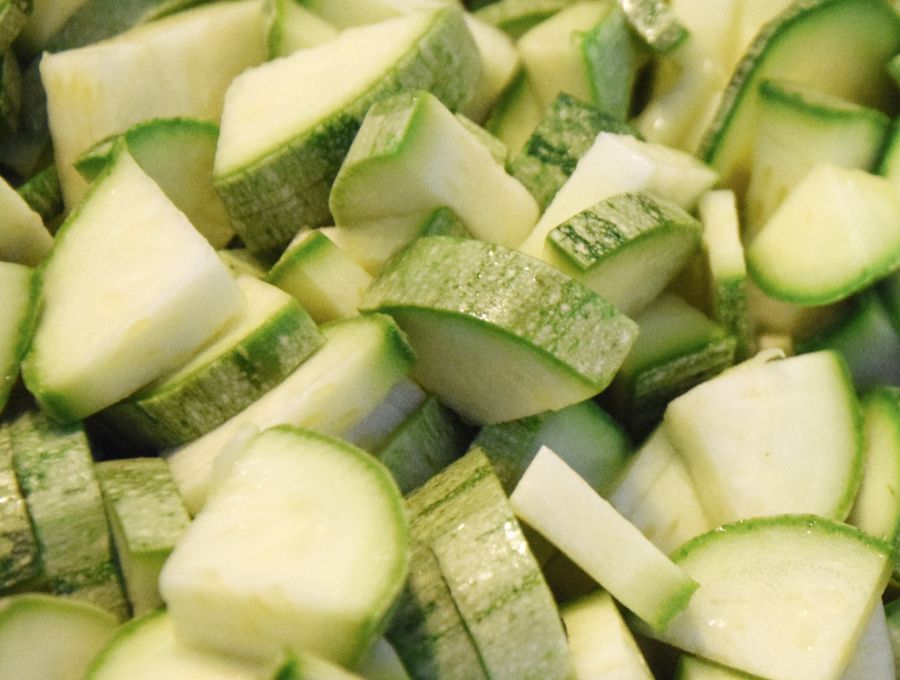
Zucchini is a remarkably versatile food that lends itself to several recipes and substitutions. While vegan recipes often use it as a meat replacement, it can be much more.
Case in point – our current intention of using zucchini as a substitute for beans in chili. Cubed zucchini works especially well for this purpose by lending itself to the texture of the recipe.
Many recipes that use zucchini in place of beans in chili usually recommend the cooking time with zucchini to be around 20 minutes.
In many cases though, it is fruitful to give it a longer time, perhaps even double the recommendation. This way, the zucchini has plenty of time to soak the flavors from the recipe. On the downside, with longer cooking durations, some may feel that the texture of zucchini gets a bit gooey. So, if you like the zucchini firmer, 20 minutes should be good enough. Give it a longer cooking time to make it softer.
3. Lentils
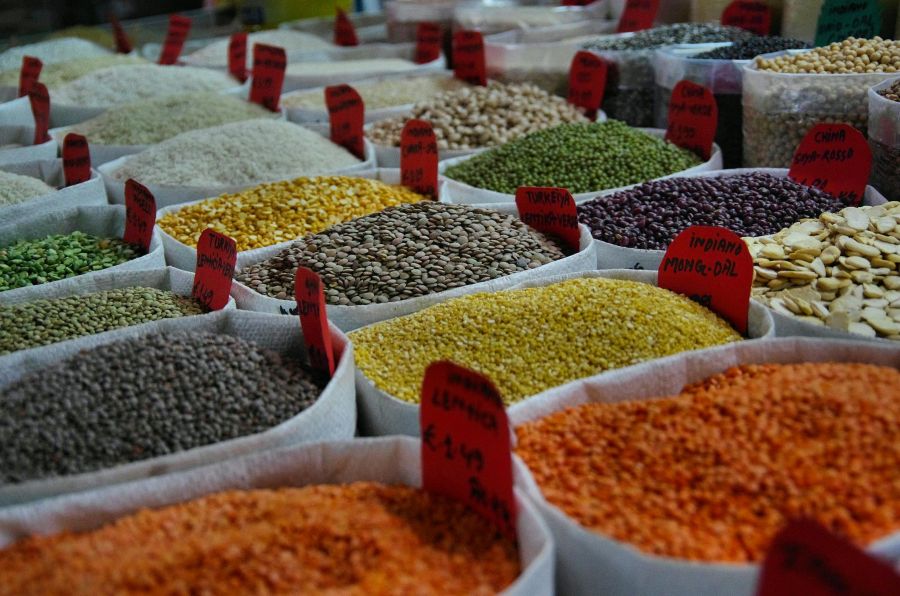
Many cuisines see beans and lentils often sharing the same recipe. It can apply to chili too, with lentils being used as substitutes for beans in chili. Lentils and beans are characterized as legumes, and thus share a few properties.
When choosing lentils, remember that they will need a shorter cooking time than beans. So, giving them 15-20 minutes in the recipe should be enough. Another method is to cook the lentils separately and then add them to the chili towards the end. This method also works if you choose to use split peas as a replacement for beans.
Do note that lentils contain carbohydrates, so if the goal of the chili recipe is to stay away from carbs, this replacement may not work for your needs. On the other hand, lentils are easier to digest, which can make them a good choice for several recipes.
4. Portobello Or Dried Shiitake Mushrooms
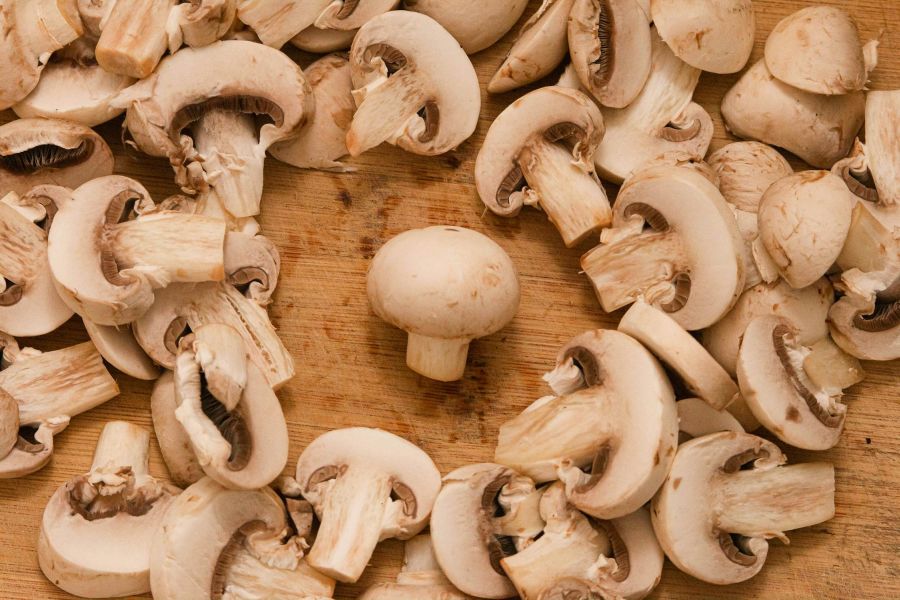
Shiitake mushrooms and portobello mushrooms are both excellent foods. In many modern recipes, they find use as vegan substitutes for meat. Although, when put to use in chili, they can be remarkable substitutes for beans as well.
The cooking time for mushrooms is relatively lower when compared to beans. They will also soak up a lot more water, so it would be wise to add a little more water when choosing this substitution.
Mushrooms do fit the general requirements for many recipes, like low carbs and high nutrients. So, these are quite the decent choice for a substitution.
5. Texturized Vegetable Protein (TVP)
Here’s another wonderful food that’s rich in nutrients and generally falls into the category of meat-replacement in vegan recipes, but can work to replace beans in chili as well. Texturized Vegetable Protein is produced by processing soybeans and is a low-carb, high-protein food.
Its texture can be quite similar to meat, so it works rather well with the beef or pork in the chili. Of course, if you’re making a vegan or vegetarian chili, TVP could take a much larger role in the recipe.
Something to remember is that TVP soaks up quite a bit of water. It will be wise to add more water to the recipe. Another solution is to cook TVP separately and add it to the chili towards the end. Yet, you will want to give TVP a little time in the chili gravy, so it can absorb the flavors.
I should add, TVP is the name for a category of foods. The brand names might be different, though they usually do mention that the product is TVP. Textured vegetable protein has been conventionally made from soy, is gluten-free, and has a ground beef-like texture. However, there are more options available, including pea-based TVP, which is suitable for those who prefer soy-free options.
6. Hominy
Using hominy as a replacement for beans in chili can work quite well, especially for those who want something light and fluffy in their recipe. However, its use can also raise a few eyebrows, especially amongst recipe or cuisine purists.
See, hominy is not a usual ingredient for chili, but it is rather popular for use in another famous recipe from Mexican and Tex-Mex cuisines – pozole. While there are similarities between chili and hominy, and the recipes are tastefully distinct, for many people hominy can be the ingredient that forms the line between the two.
To be fair, chili and pozole are both awesome foods, so you will have something amazing to enjoy. And unless the food is for the culinary police, it’s very likely everyone will enjoy the food rather than care about the technicalities.
But there are a few considerations when adding hominy to a chili recipe. If you are skilled enough to make hominy at home, adding it to chili will be a breeze. Canned hominy can be a bit softer, so timing it towards the end of the recipe will likely yield better results.
7. Tempeh Or Tofu
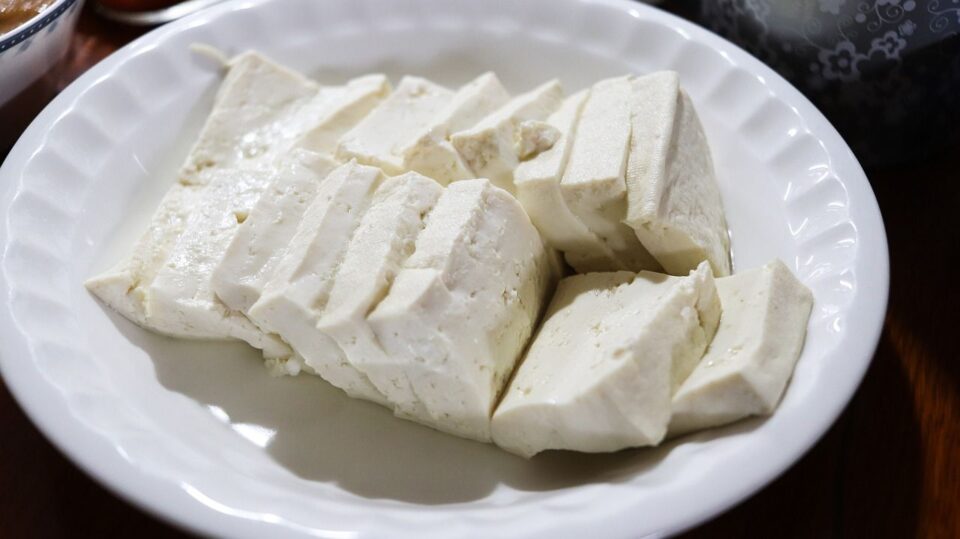
The choice between tempeh or tofu as substitutes for beans in chili can be guided entirely by your taste preferences, availability, and similar factors. Though there are notable differences between the two, for the purpose of this substitution, the process with either follows the same path.
Another point to note is that these protein-rich, low-carb ingredients are usually meat-substitutes in vegan recipes. Yet, they can go rather well to replace beans as well, and thanks to their texture and conventional use, they will have a positive effect on the overall texture and consistency of the chili.
When adding tempeh or tofu to the chili recipe, it is usually fruitful to cube them for the best texture. It’s also wise to give these ingredients some time in the recipe, so they can adequately soak up the flavors.
8. Adding More Vegetables
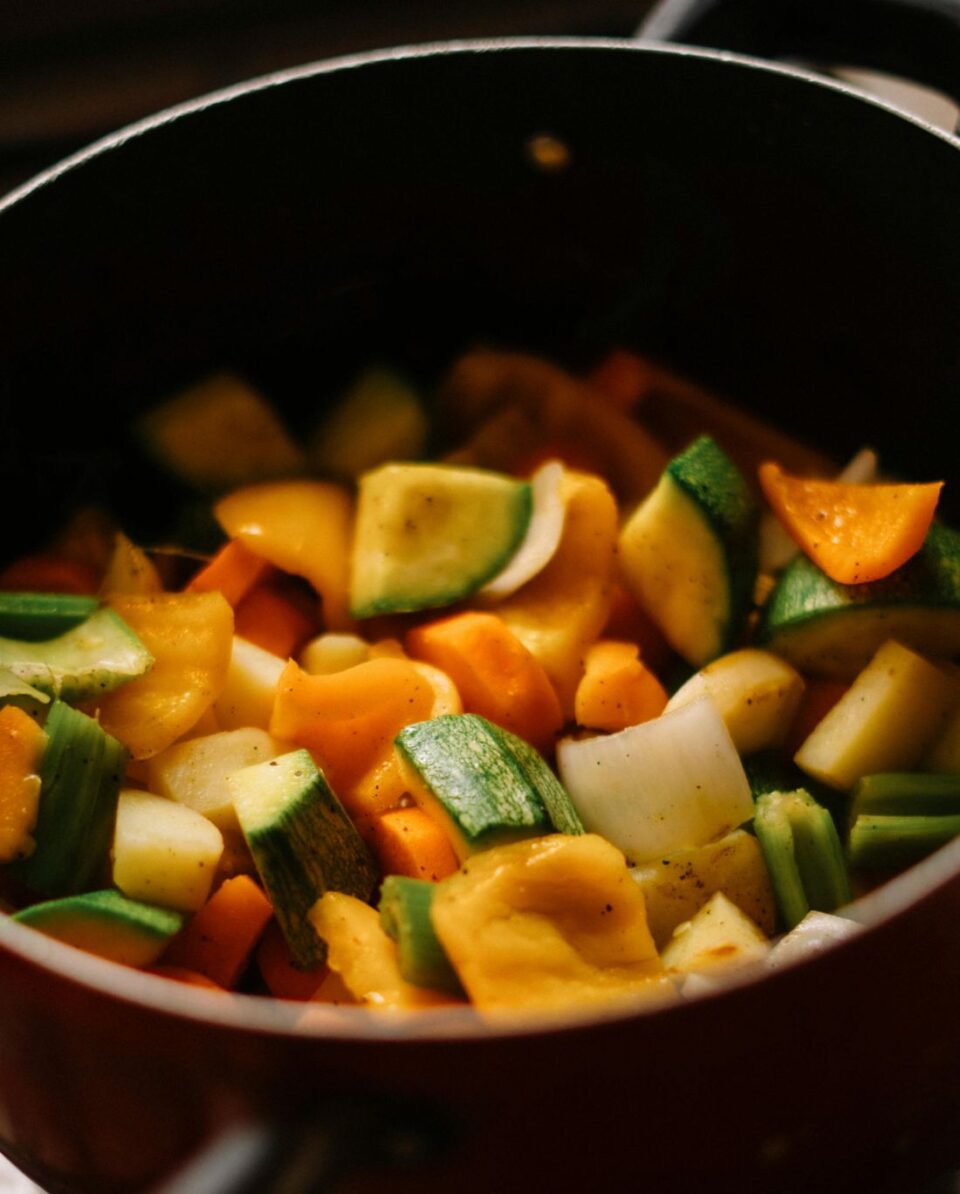
Adding more chopped vegetables to the chili recipe should make up for the lack of beans. If the recipe is already rich in vegetables, just increasing the amount of vegetables can make up for the lack of beans.
Some favorites include cauliflower, carrots, and zucchini. And if the recipe already includes veggies, no additional effort is necessary. Though as an idea, while cauliflowers and carrots can be chopped as usual, it could be more fruitful to use cubed zucchini. If you recall, we’ve already listed cubed zucchini as a good substitute for beans for chili recipes.
9. Nuts
Adding nuts to chili can be a divisive choice, so consider your palate before choosing this suggestion of a substitute. This is also a more expensive choice, considering cashew nuts and almonds are significantly more expensive than most other foods on the list.
The usual route for this substitution is to break up the nuts into smaller pieces and then roast them before adding them to the chili. Nuts bring proteins, nutrients, and their unique flavor and texture to the recipe. It can often be a welcome addition.
Walnuts usually aren’t preferred, but if they work to your preferences, they are acceptable.
Peanuts (while technically not nuts) are a good choice. Cook them a bit and then add to the recipe. They bring a nice texture and flavor, which could be a welcome addition. On that note, roasted sunflower seeds can work too, though this is not a very popular option.
10. Cooked Rice (Or Other Grains)
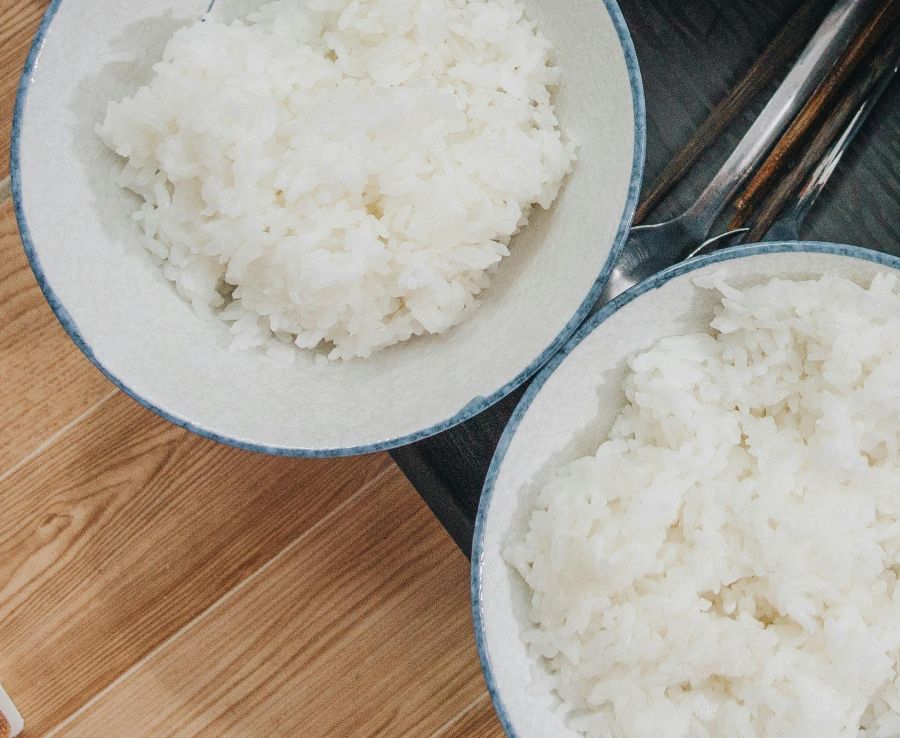
While not a direct substitutes for beans in chili, cooked rice can be a welcome addition, bringing some volume to the recipe. Just have some cooked white rice ready (other varieties can work too) and add it to the chili recipe towards the end. This is a simple and quick solution to replacing beans and adding some volume to chili.
If you’re so inclined, other grains can work as well with the same method. Do remember to cook the grains before adding them to the chili, or they could remain raw, spoiling the recipe.
Some choices worthy of note are farro, quinoa, sorghum, grits, and polenta.
11. Sweet Potatoes
Sweet potatoes are an interesting addition to chili. While they’re good to use as an ingredient all by themselves, they work very nicely as a replacement for beans as well.
Interestingly, regular potatoes are usually not a welcome addition to chili. However, sweet potatoes seem to work just fine and are favored by many for chili recipes. That said, though sweet potatoes provide a nice touch to chili, their addition could still raise some eyebrows, considering most people do not see potatoes in any form as a good addition to chili. Do remember to use cubed sweet potatoes, to ensure the best texture and flavor for the chili.
Insights On Choosing The Best Substitutes For Beans In Chili
After this extensive discussion, it is fair to say that we have a good idea on replacing beans in chili. It goes without saying that yes, you can absolutely make chili without beans – they’re not a necessary ingredient. Yet, it’s also true that beans have been part of chili recipes for a very long time now, so their use in a recipe or a desire for substitution are quite natural.
Incidentally, a successful substitution for beans comes from bringing both these viewpoints together. The way to solve this is by increasing the volume or amount of other ingredients in the recipe. Meat is favored for this choice, though you can also increase the amount of veggies to get similar results.
Other options include using ingredients that bring volume and nutrition to the recipe. These can be conventional meat alternatives that can replace beans in chili. Options like TVP, tempeh, tofu, and even mushrooms could fall into this category.
Another method is to use an entirely different set of ingredients that act as a replacement for beans. These include cooked grains like rice, nuts, hominy, lentils, and other similar foods.

